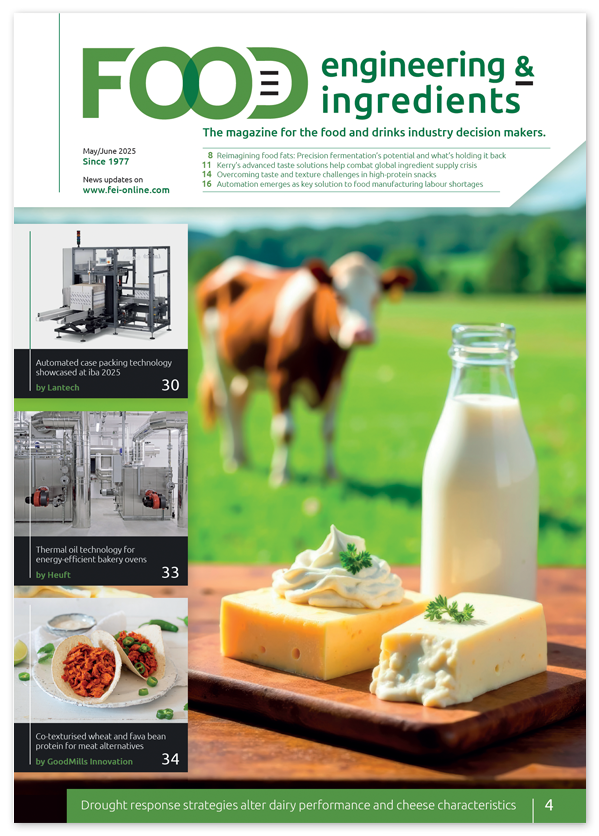Ensuring paper sacks are recyclable
The proposed EU Regulation on Packaging and Packaging Waste (PPWR) aims to tackle the problem of growing packaging waste. One of the targets is to make all packaging recyclable by 2030. To support sack kraft paper producers, paper sack converters and fillers to maximise the recyclability of all paper sacks placed on the market, EUROSAC and CEPI Eurokraft have published Paper Sacks – Design for Recyclability Guidelines https://www.eurosac.org/media/news/paper-sacks-design-for-recyclability-guidelines . These guidelines provide recommendations for the materials used and for the physical construction of paper sacks.
“Our industry is committed to delivering high-performance and sustainable packaging for dry bulk products that supports the transition to a bio-based, low-carbon and circular economy,” said Catherine Plitzko-Kerninon, General Delegate of EUROSAC, the European Federation of Multiwall Paper Sack Manufacturers. “One of the key action areas defined in our road map is to ensure that paper sacks achieve a high percentage of recycling after use. Our new guidelines provide useful information for all actors in the paper sack value chain on how to ensure the recyclability of their packaging.”
EUROSAC is the European Federation of Multiwall Paper Sack Manufacturers. The federation represents over 80% of European paper sack manufacturers. Its members operate in 20 different countries. They produce some 5 billion paper sacks per year, representing 630,000 tonnes of paper converted in 55 plants. Sack manufacturers from all continents and bag manufacturers also contribute to the federation as corresponding members, and more than 30 suppliers (paper, film, machine or glue manufacturers) are registered as associate members. www.eurosac.org CEPI Eurokraft is the European Association for Producers of Sack Kraft Paper for the Paper Sack Industry and Kraft Paper for the Packaging Industry. It has nine member companies representing a volume of 3 million tonnes of paper produced in ten countries. www.cepi-eurokraft.org
The prerequisites
How is recyclability defined? According to a new regulative proposal from the European Commission, collection and processing structures for the packaging format must be available at an industrial scale to be considered recyclable. It must be possible to collect the packaging from existing collection points and sort it in a qualified manner. In addition, the packaging should be designed to be compatible with the existing recycling systems and processes. Therefore, all packaging materials should be selected and applied by considering their impact on the recyclability.
Paper sack recycling in Europe
As paper sacks represent only a small fraction of the total paper packaging stream in Europe (1.5%), there is no Europe-wide recycling system solely for paper sacks. Instead, they will mostly be collected as part of mixed paper packaging for recycling streams. They are made up of 91.7% of paper, 2% glues and 1.1% inks. The remaining 5.2% are typically moisture barriers in form of polyethylene film. These materials are separated out in most recycling facilities. Our goal as our industry is to recycle each ingredient of the paper sack in the best way. As a predominantly fibre-based packaging solution, paper sacks are inherently recyclable. Nonetheless, there are numbers of properties of paper sack specifications and designs which may influence the recyclability of individual paper sacks.
Design recommendations
The Paper Sacks – Design for Recyclability Guidelines provide recommendations for all materials used in industrial paper sacks. They cover the different fibre types and the eventual additives used in sack kraft paper. For the non-fibre components, the document informs about the implications for recyclability of different barriers that are necessary to keep the packaged product safely. Adding to that, the guidelines focus on inks, varnishes and adhesives as well as additional constructive elements such as carrying handles and patched-in plastic windows.
“Armed with this condensed information, all players in the paper sack business will be well-prepared to maximise the recyclability of the paper sacks they place on the market,” said Plitzko-Kerninon.
Several existing methods and guidelines relevant to the design for recyclability of paper sacks have been referenced in preparation of the Recyclability Guidelines document. The guidelines will be updated regularly to reflect the dynamic situation of the fast-changing technologies and legislations on recycling in Europe.
DOWNLOAD
Paper Sacks – Design for Recyclability Guidelines
https://www.eurosac.org/media/news/paper-sacks-design-for-recyclability-guidelines




